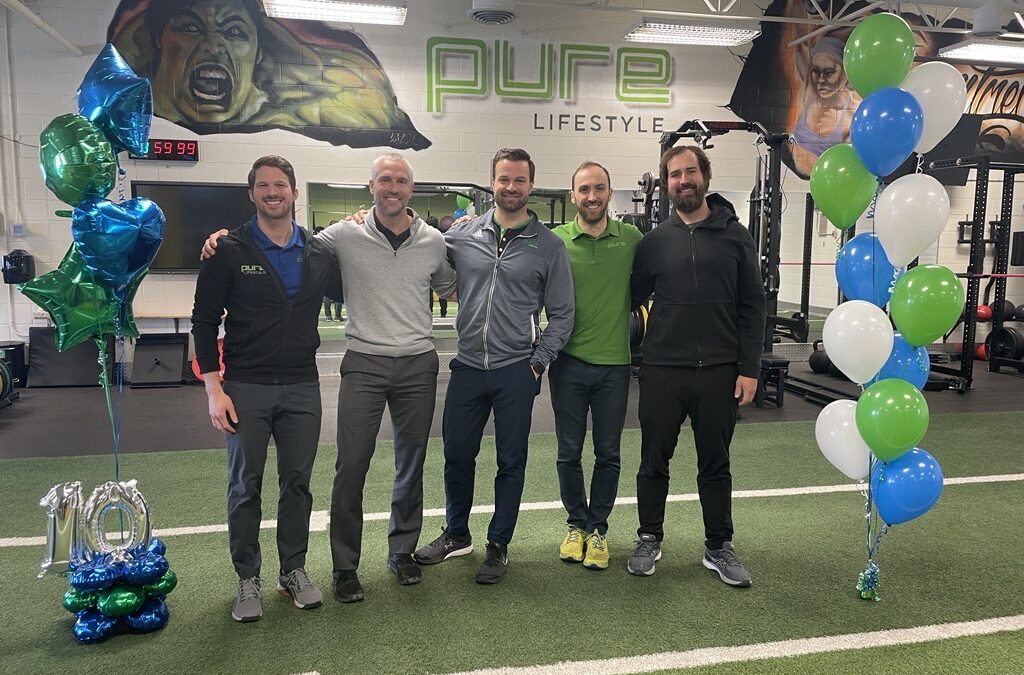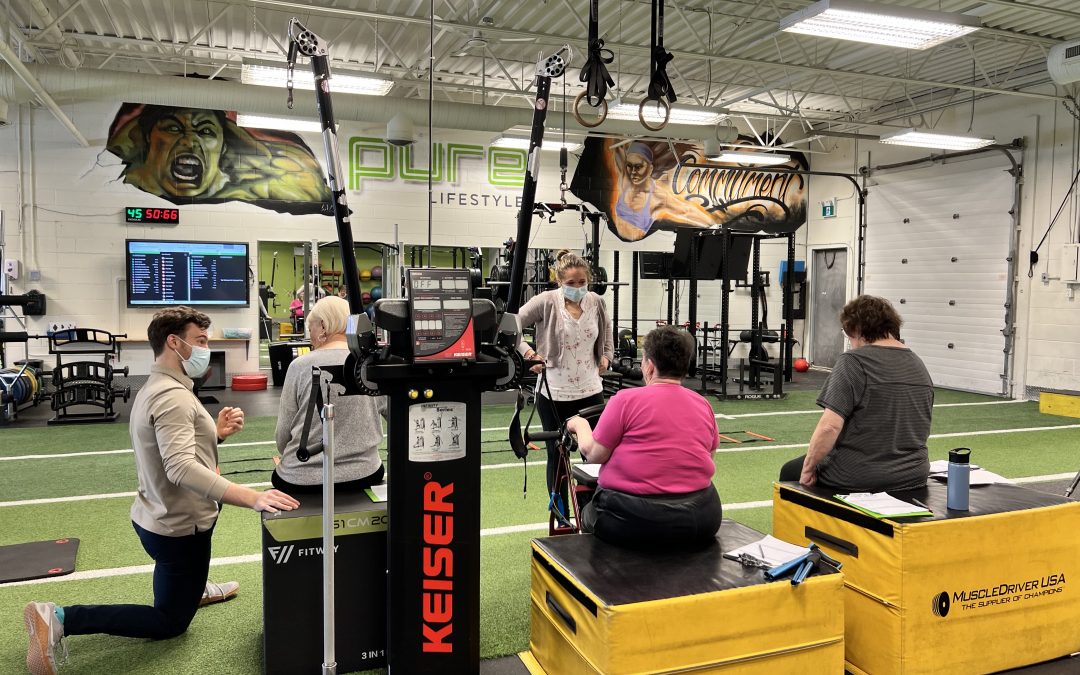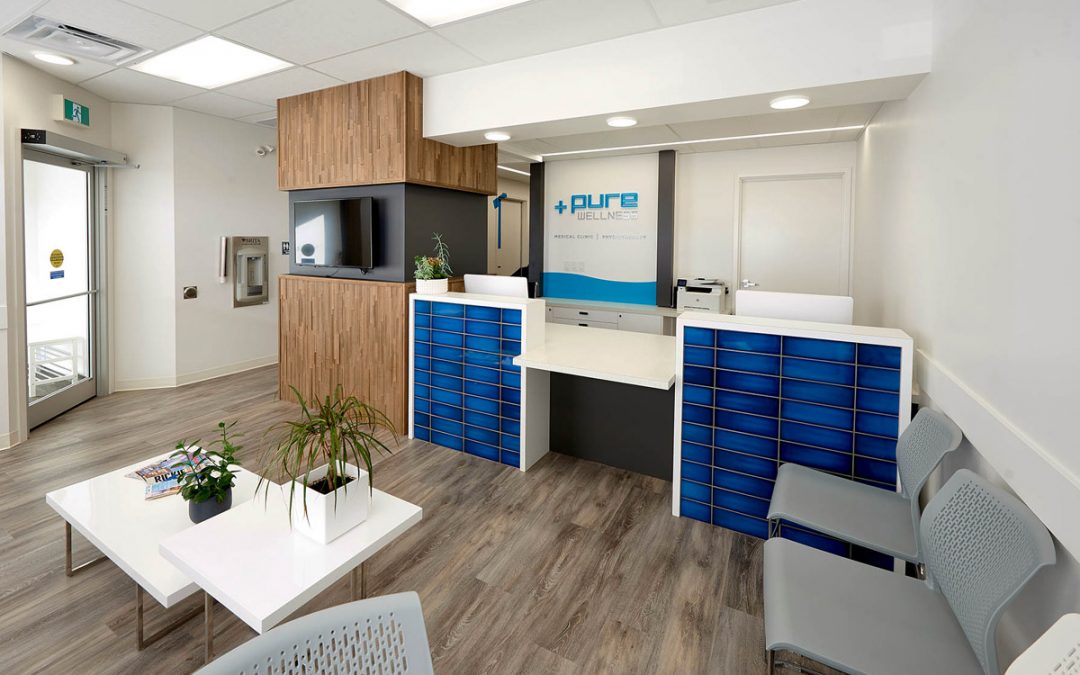Peaking for Playoffs: Part 2
Let’s be honest, Part 1 of this article was pretty stale as it explained the theory behind the problems without actually giving the reader what they wanted, how to fix the problem! So here it is, the practical components or the “fixes” to the problems mentioned in the last article. Before advancing to the exercises, there are a few things we should go over. Firstly, similar to a workout, mobility drills are strategically prescribe for maximum results. Therefore, one should know that performing myofascial trigger point release should be performed prior to stretches and range of motion drills. In theory, the muscle tissues and fascia will be more relaxed and loose after soft tissue work, therefore allowing for a more effective and deeper stretch. Secondly, in order to perform these drills, a few household items and tools will also be needed. The best items for myofascial release include either a baseball softball (my personal favorite), a lacrosse/golf ball, or a tennis ball. Keep in mind that the harder the ball, the more aggressive the soft tissue work will be. As for the mobility drills, an exercise band would be ideal, yet if unavailable, a towel or belt could be used.
A warning should be issued to athletes preparing to complete the prescribed exercises as they may not be enjoyable or very entertaining. Seriously, when was the last time you heard of someone bragging about holding a stretch for 2 minutes or doing joint mobilizations for 10 repetitions? Needless to say, when performing these exercises, one should not be pushing through excruciating pain. Small bouts of pain is acceptable, however, if it feels like you’re doing more harm than good, chances are you might be. A good rule of thumb is to keep the discomfort level under a 7/10 on a pain threshold scale. To get the most out of all the drills, always try to relax your muscles and control your breathing.
The Fix
Hips
As mentioned in Part 1 of the series, the first problem established was how the skating position leads to very tight and immobile hips. These tight hips, especially hip flexors or the Iliopsoas (the correct anatomical name), lead to a chronic anterior pelvic tilt. Therefore, our first order of business is to tackle this issue by introducing hip opening exercises and stretches. The image below illustrate the difference between a neutral and anterior tilted pelvis. Notice the difference between both spines.

The first mobility drill I would like to introduce is called the “dirty dog”, you will understand the meaning of the name soon. This is a great exercise to help open up the hips and work on getting full range of motion. Furthermore, it will also teach athletes how to properly activate and engage their glutes. To perform this exercise, get into a quadruped position (on both hands and knees), line up your hands and knees shoulder width apart. Position your knees directly under your hips and your hands directly under your shoulders.

With a neutral spine, pick up one leg off the ground and pull it away from your body, as if you were a dog peeing on a hydrant, hence why it’s called the dirty dog. Make sure to keep your foot dorsiflexed and your knee bent at 90 degrees. Abduct your leg as far as you can without moving your lower back or compromising the neutral spine. Once you’ve reach the end of your range of motion, return your leg back to the starting position. If done properly, you should feel a burn on the outer side of the hips. Repeat this for 15 reps on each side.
[fusion_builder_container hundred_percent=”yes” overflow=”visible”][fusion_builder_row][fusion_builder_column type=”1_1″ background_position=”left top” background_color=”” border_size=”” border_color=”” border_style=”solid” spacing=”yes” background_image=”” background_repeat=”no-repeat” padding=”” margin_top=”0px” margin_bottom=”0px” class=”” id=”” animation_type=”” animation_speed=”0.3″ animation_direction=”left” hide_on_mobile=”no” center_content=”no” min_height=”none”][column-group]
[column] [/column] [column]
[/column] [column] [/column]
[/column]
[/column-group]
The next step is to hit those nasty trigger points by performing myofascial release with the trigger ball of your choice. Trigger points are localized areas in the muscle where tension has built up over time due to training or injury. Myofascial trigger point therapy will release tension within these areas and help relax the muscles. The result is an increase in range of motion and possible elimination of nagging pains. Research shows that it takes around 2 minutes to make soft-tissue changes, therefore one should try and target 2 minutes on each area for maximum results.
Let’s start by targeting the hip flexors. Lie flat on your stomach and place the ball in the crease between your thigh and your lower stomach. If you are really tight, it shouldn’t take long to find that sweet spot also known as the trigger point. Hold the pressure on the tightest spot for approximately 2 minutes and then switch legs. Notice that the more bodyweight you put on the ball, the more intense the trigger point will be.
[/fusion_builder_column][fusion_builder_column type=”1_1″ background_position=”left top” background_color=”” border_size=”” border_color=”” border_style=”solid” spacing=”yes” background_image=”” background_repeat=”no-repeat” padding=”” margin_top=”0px” margin_bottom=”0px” class=”” id=”” animation_type=”” animation_speed=”0.3″ animation_direction=”left” hide_on_mobile=”no” center_content=”no” min_height=”none”][column-group]
[column] [/column] [column]
[/column] [column] [/column]
[/column]
[/column-group]
After having worked on the hip flexors, proceed to do the same thing on the glutes. Either sit on the ball with one leg crossed over the other as illustrated by the picture below. If this is too painful, try leaning against a wall instead (careful with the drywall as you could puncture a hole if pushing too hard). Continue for another 2 minutes each leg.
[/fusion_builder_column][fusion_builder_column type=”1_1″ background_position=”left top” background_color=”” border_size=”” border_color=”” border_style=”solid” spacing=”yes” background_image=”” background_repeat=”no-repeat” padding=”” margin_top=”0px” margin_bottom=”0px” class=”” id=”” animation_type=”” animation_speed=”0.3″ animation_direction=”left” hide_on_mobile=”no” center_content=”no” min_height=”none”][column-group]
[column] [/column] [column]
[/column] [column] [/column]
[/column]
[/column-group]
Once you have relaxed the muscles and released some tension it will be time to stretch and mobilize the area. A very effective stretch and mobilization for the hip flexors is the “Couch stretch” created by Kelly Starrett in his book “Becoming a Supple Leopard”. To perform this stretch, kneel down on one knee near a wall, box or couch. Next, grab the foot of the kneeling leg and pull it towards your glutes. Then, use the wall to support this foot and hold the position. At this point, you should feel a stretch throughout the quadriceps and hip flexor of the kneeled leg. Idealy try and get yourself as upright as possible by pulling your shoulders back and leveling your rib cage and hips. Notice that the closer your knee is to the wall, the more intense the stretch will be on the quadriceps and hips. Hold this position for two minutes and then switch sides.

Exercise Prescription for Hip mobility:
| Exercise | Time/Reps |
| Dirty Dogs | 12 reps x 2 sets |
| Hip Flexor Trigger Point | 2 min/side |
| Glut Trigger Point | 2 min/side |
| Couch Stretch | 2 min/side |
Thoracic Spine
As talked about in Part 1, thoracic kyphosis is common in hockey players due to the skating position. The picture below illustrates thoracic kyphosis compared to proper posture.

In order to help correct the kyphotic posture, strengthening the posterior chain and reeducated proper posture will be needed. A great exercise that is highly effective and does not require any equipment is the “Wallslide” or “Wall-angel”. To perform this exercise, find an open area on the wall and press your back into it. Bend your knees to get into a slight squat and then raise your elbows at 90 degrees.

The first thing you should focus on is keeping your back flat against the wall, this includes your lower back. The next step is to pull your elbows and wrists back towards the wall without compromising the flat back. If unable to do this, bring the elbows as far as you can stopping just before losing that neutral spine. Next, push your hands towards the ceiling while keeping your back and elbows as far back towards the wall as possible. Imagine yourself doing “snow-angels” but rather on a wall. If you are really tight, you should feel a stretch in the upper back as well as in the chest and shoulders. Perform 12 repetitions of this exercise.

Rotational mobility within the thoracic spine was also established as an area of concern for hockey players. Therefore, an exercise that could benefit players is the “quadruped T-spine rotation”. The first step is to get into the quadruped position, the same starting position as the “dirty dog” explained earlier. The second step is to place one hand on the adjacent ear. While keeping the hand at the ear, drive your elbow under your body towards the opposite arm. Make sure to keep your hips level and to simultaneously rotate your head with your elbow. The third step is to do the opposite by rotating towards the ceiling, again make sure your head follows the elbow’s movement. Rotate as far as you can without moving or shifting your hips. You should feel a stretch in the upper back and chest. Perform 8 slow and controlled movements per side.
[/fusion_builder_column][fusion_builder_column type=”1_1″ background_position=”left top” background_color=”” border_size=”” border_color=”” border_style=”solid” spacing=”yes” background_image=”” background_repeat=”no-repeat” padding=”” margin_top=”0px” margin_bottom=”0px” class=”” id=”” animation_type=”” animation_speed=”0.3″ animation_direction=”left” hide_on_mobile=”no” center_content=”no” min_height=”none”][column-group]
[column] [/column][column]
[/column][column] [/column]
[/column]
[/column-group]
Exercise Prescription for Thoracic Spine mobility:
| Exercise | Time/Reps |
| Wallslide | 12 reps x 3 sets |
| Quadruped T-Spine Rotation | 8 reps/side x 3 sets |
Shoulders
We discussed that the shoulder joint is often injured during hockey due to its lack of stability and mobility. Therefore, a few simple exercise can help with this issue. The first exercise called “shoulder external rotations”, can be performed ideally with a resistance band or with a towel. This exercise is made to help strengthen the rotator cuff muscles within the shoulder joint, therefore making it stronger and more stable. Start by placing your elbows tight to your sides and then bending them at 90 degrees with your palms up. Next, with the band or towel in your hands, pull your hands away from each other as far apart as you can while keeping your elbows tight to your sides. Try not to round your back and always keep your shoulder blades back in a neutral position. This exercise has also been referred to as the “no money drill”, as it is comparable to the hand gesture of someone indicating that they have no money. If you are using a resistance band, aim for 12 reps. However, if you are using a towel, aim for a static resisted hold for 30 seconds (pull as hard as you can for 30 seconds).
[/fusion_builder_column][fusion_builder_column type=”1_1″ background_position=”left top” background_color=”” border_size=”” border_color=”” border_style=”solid” spacing=”yes” background_image=”” background_repeat=”no-repeat” padding=”” margin_top=”0px” margin_bottom=”0px” class=”” id=”” animation_type=”” animation_speed=”0.3″ animation_direction=”left” hide_on_mobile=”no” center_content=”no” min_height=”none”][column-group]
[column] [/column][column]
[/column][column] [/column]
[/column]
[/column-group]

The second exercise is called “shoulder swords”. This is one of my favorite shoulder mobility drill as it targets all the positions the shoulder can functionally move in. This is great for hockey players as one never knows what position their shoulder will get into during an intense game. Lie flat on your stomach with your arms abducted out to your sides. Now raise your hands off the ground and begin to rotate them in opposite directions. One hand should be heading towards your head while the other towards your lower back. Continue rotating them in opposite directions as far as you can, image yourself pulling a sword out from the top of your back and one from the bottom of your back (aka “shoulder words”). You should feel a stretch within the shoulder capsule and feel your external and internal rotator cuff muscles working overtime. Now in a perfect world, you should be able to reach your hands behind your back, but in reality, the majority of us can’t. Perform 12 repetitions in total, meaning 6 rotations per arm.
[/fusion_builder_column][fusion_builder_column type=”1_1″ background_position=”left top” background_color=”” border_size=”” border_color=”” border_style=”solid” spacing=”yes” background_image=”” background_repeat=”no-repeat” padding=”” margin_top=”0px” margin_bottom=”0px” class=”” id=”” animation_type=”” animation_speed=”0.3″ animation_direction=”left” hide_on_mobile=”no” center_content=”no” min_height=”none”][column-group]
[column] [/column][column]
[/column][column] [/column]
[/column]
[/column-group]

Exercise Prescription for Shoulder stability and mobility:
| Exercise | Time/Reps |
| Shoulder External Rotations | 12 reps x 3 sets |
| Shoulder Swords | 12 reps x 3 sets |
Ankles
Lastly, we talked about how ankles get so immobile due to the stiffness of skates, therefore restricting their range of motion. A very simple mobility drill that can help with ankle stiffness is the “sitting ankle plantarflexion stretch”. To perform this exercise, sit on your knees while making sure your feet are plantarflexed (toes pointing away from the shin). Relax your feet and ankles and lean your butt back onto your ankles. You will notice a stretch in the front on your ankles, the more bodyweight you put on your ankles, the deeper the stretch will become. If needed, use your hands to take a bit of weight off to lower the intensity. Try and hold this position for 2 minutes and then slowly get up.
[/fusion_builder_column][fusion_builder_column type=”1_1″ background_position=”left top” background_color=”” border_size=”” border_color=”” border_style=”solid” spacing=”yes” background_image=”” background_repeat=”no-repeat” padding=”” margin_top=”0px” margin_bottom=”0px” class=”” id=”” animation_type=”” animation_speed=”0.3″ animation_direction=”left” hide_on_mobile=”no” center_content=”no” min_height=”none”][column-group]
[column] [/column][column]
[/column][column] [/column]
[/column]
[/column-group]
Exercise Prescription for Ankle mobility:
| Exercise | Time/Reps |
| Sitting Ankle Plantarflexion | 2 minutes |
Conclusion
By following these simple exercises and mobility drills athletes can regain the range of motion they once had prior to logging those long hours on the ice. It is not expected that you complete all of the prescribed exercise during one session. Being consistent is key, aim to perform a few mobility drills every day throughout the week. Just don’t forget to rotate through all of them. However, if you are committed and are willing to spend the time, go ahead!
As these exercises can be quite stale and boring, I suggest doing them while watching TV or something that will keep your mind off them. Personally, I love to throw in a few wallslides or do some soft tissue work during commercial breaks! Now keep in mind, these exercises are only the tip of the iceberg when it comes to functional and mobility drills. I decided to keep it simple and did not want to overwhelm anyone who would be reading this article. However, if you are looking for more help or tips don’t be afraid to ask!
Cheers,
Paul Bissonnette B.Kin, CEP, CSCS, FSMC, Pn1
References:
Cheatham, S., Kolber, M., Cain, M., & Lee, M. (2015). The effects of self-myofascial release using a foam roller or roller massager on joint range of motion, muscle recovery, and performance: a systematic review. The International Journal of Sports Physical Therapy, 10(6), 827-838.
Macdonald, G., Button, D., Drinkwater, E., & Behm, D. (2014). Foam Rolling as a Recovery Tool after an intense bout of physical activity. Medicine & Science in Sports & Exercised, 46(1), 131-142.
Škarabot, J., Beardsley, C., & Štirn, I. (2015). Comparing the effects of self-myofascial release with static stretching on ankle range of motion in adolescent athletes. The International Journal of Sports Physical Therapy, 10(2), 203-212.
Starrett, K., & Cordoza, G. (2015). Becoming a Supple Leopard: The Ultimate Guide to Resolving Pain, Preventing Injury, and Optimizing Athletic Performance (2nd ed.). Las Vegas: Victory Belt Publishing Inc.
[/fusion_builder_column][/fusion_builder_row][/fusion_builder_container]







